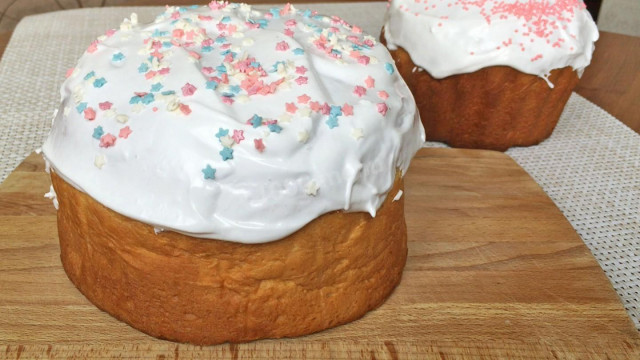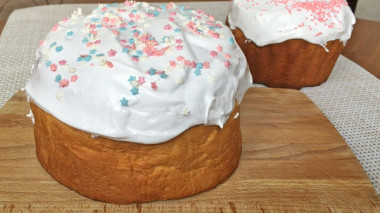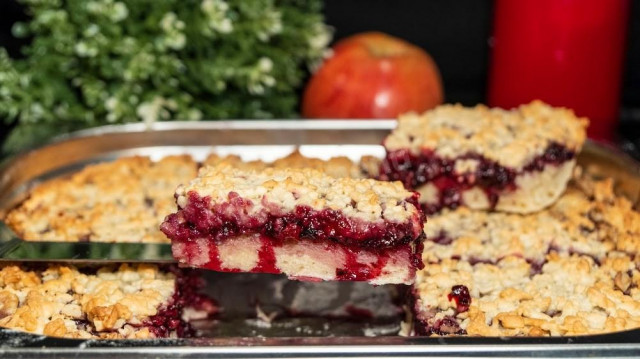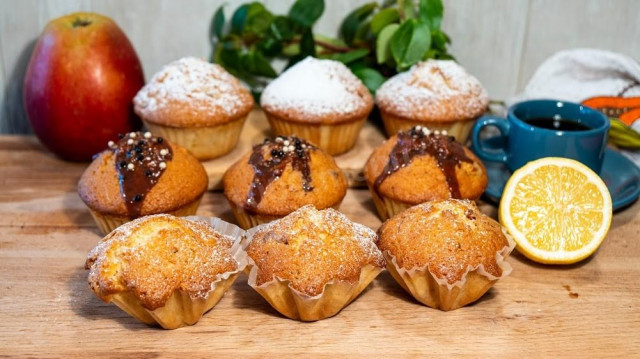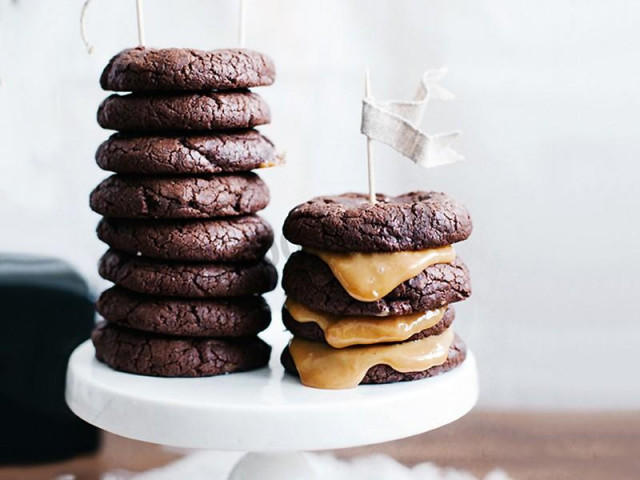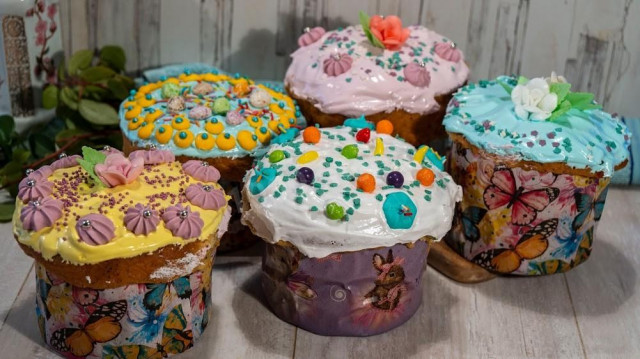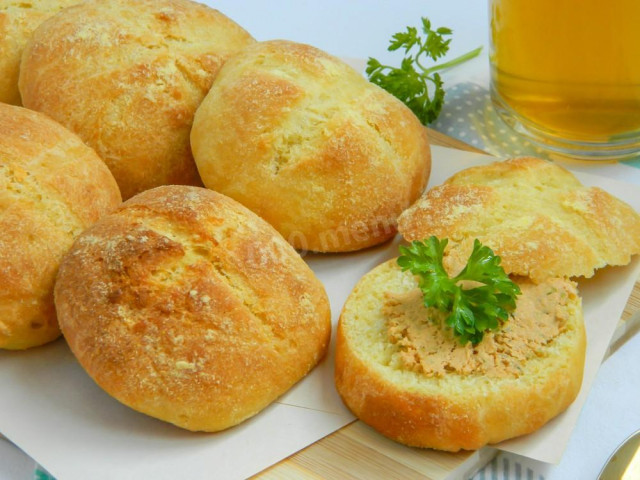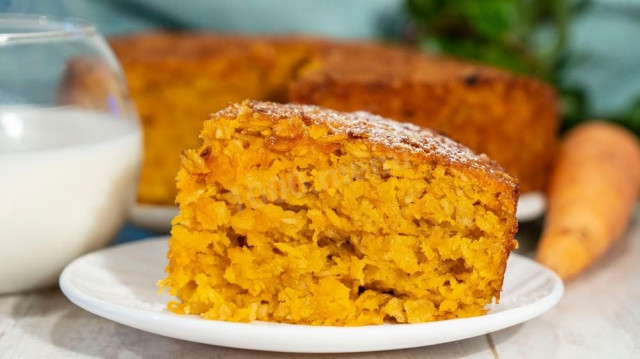Composition / ingredients
Cooking method
sourdough:
pour warm milk into a bowl, add yeast, sugar and flour, mix well, cover with cling film and leave for 30 minutes.
dough:
beat eggs with sugar until fluffy. add the sourdough, then gradually add the sifted flour. add salt.
when all the flour is in the dough, add butter and cream, knead the dough
the dough should be soft and elastic and should not stick to your hands
cover with plastic wrap and leave in a warm place for 1-2 hours
when the dough rises, mix it a couple more times (at this point you can add raisins or dried fruits)
then divide into parts and fill out the forms by 1/3
bake at 180 C for 35-40 minutes, check readiness with a wooden stick
glaze:
soak gelatin in water
add sugar and water to a small saucepan.
put on medium heat, stirring, bring to a boil, remove from heat.
pour sugar syrup into a bowl, add swollen gelatin, beat with a mixer until white
add lemon juice and beat again
put a bowl of icing over a bowl of hot water
decorate cakes
Kulich is the Russian name for Easter bread. Among the Eastern Slavs, the festive bread was round and high, decorations made of dough were made on top of it. The cylindrical shape of the cake is associated with the church practice of baking artos. A tall and loose cake is called "baba".
This is a yeast product of varying degrees of richness and different in size and shape, but always high. Among the Poles of Greater Poland, the analogue of kulich was "women", or "grandmothers" — small sweet Easter loaves made from wheat flour.
Is made in the form of a cylinder of dough, often with raisins, decorated with powdered sugar or icing on top. As spices are used: vanilla, cardamom, nutmeg.
In various regions of Russia, cakes were baked in different forms (for example, in the Vologda province in the form of an open berry pie), but most often they were given the form of a high church prosphora (for similarities with artos, see below) and made it as fast as possible (that is, not lean). This was achieved by adding a large amount of eggs and butter to the dough.
There is a tradition to consecrate cakes, as well as Easter, Easter eggs and other festive treats at the end of Lent. This usually happens on Holy Saturday, but in some churches it can also happen after the festive Easter service.
The cake was consumed after the end of the Easter service: sometimes already in the church parishioners treated each other and the clergy with pieces of their cake, but more often at home at the Easter meal, the head of the family divided it according to the number of household members.
Caloric content of the products possible in the composition of the dish
- Whole cow's milk - 68 kcal/100g
- Milk 3.5% fat content - 64 kcal/100g
- Milk 3.2% fat content - 60 kcal/100g
- Milk 1.5% fat content - 47 kcal/100g
- Concentrated milk 7.5% fat content - 140 kcal/100g
- Milk 2.5% fat content - 54 kcal/100g
- Chicken egg - 157 kcal/100g
- Egg white - 45 kcal/100g
- Egg powder - 542 kcal/100g
- Egg yolk - 352 kcal/100g
- Ostrich egg - 118 kcal/100g
- Pressed yeast - 109 kcal/100g
- Whole durum wheat flour fortified - 333 kcal/100g
- Whole durum wheat flour universal - 364 kcal/100g
- Flour krupchatka - 348 kcal/100g
- Flour - 325 kcal/100g
- Granulated sugar - 398 kcal/100g
- Sugar - 398 kcal/100g
- Butter 82% - 734 kcal/100g
- Amateur unsalted butter - 709 kcal/100g
- Unsalted peasant butter - 661 kcal/100g
- Peasant salted butter - 652 kcal/100g
- Melted butter - 869 kcal/100g
- Gelatin - 355 kcal/100g
- Salt - 0 kcal/100g
- Water - 0 kcal/100g
- Lemon juice - 16 kcal/100g
- Cream 35% - 337 kcal/100g
- Cream 40% - 362 kcal/100g
- Vanilla sugar - 379 kcal/100g

